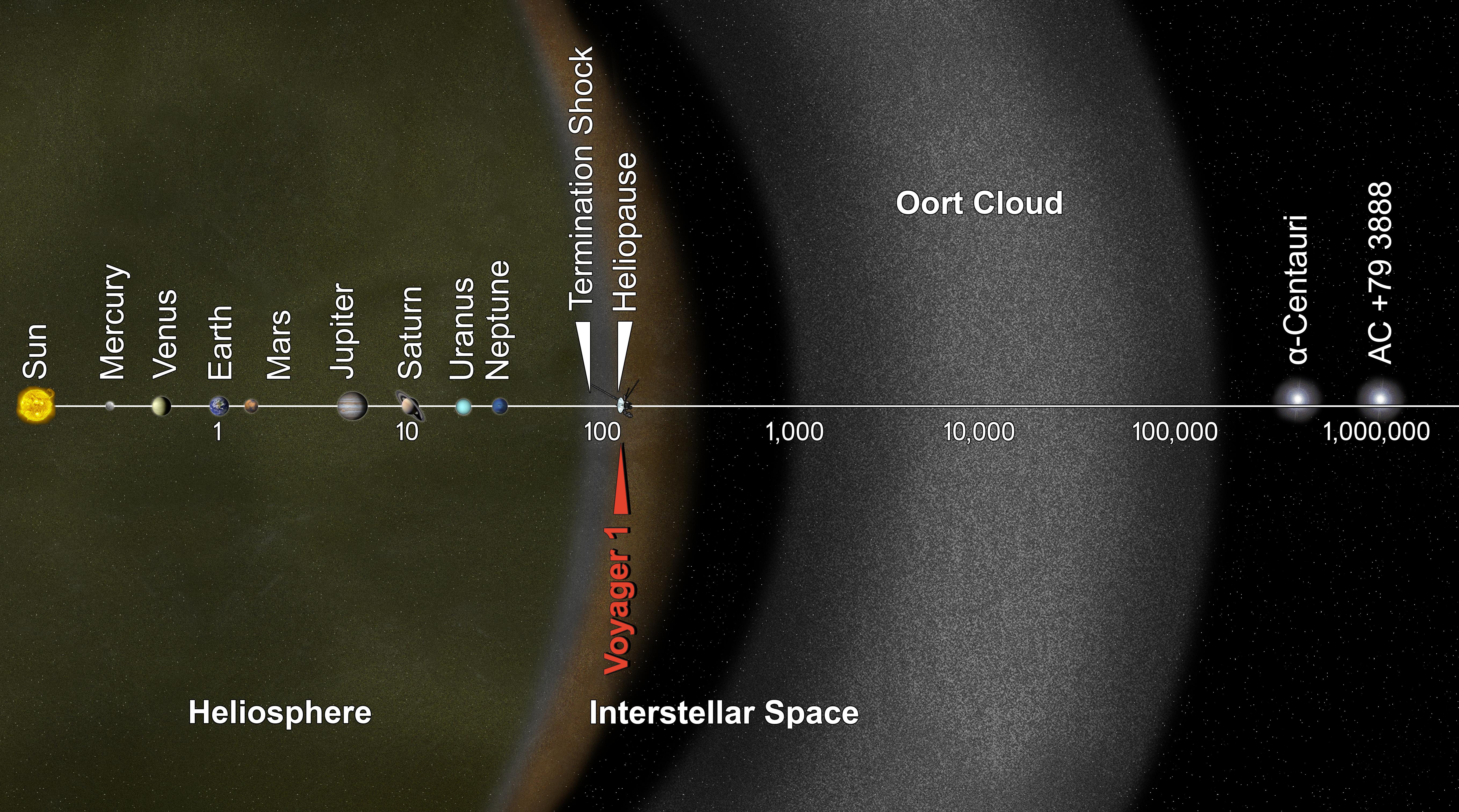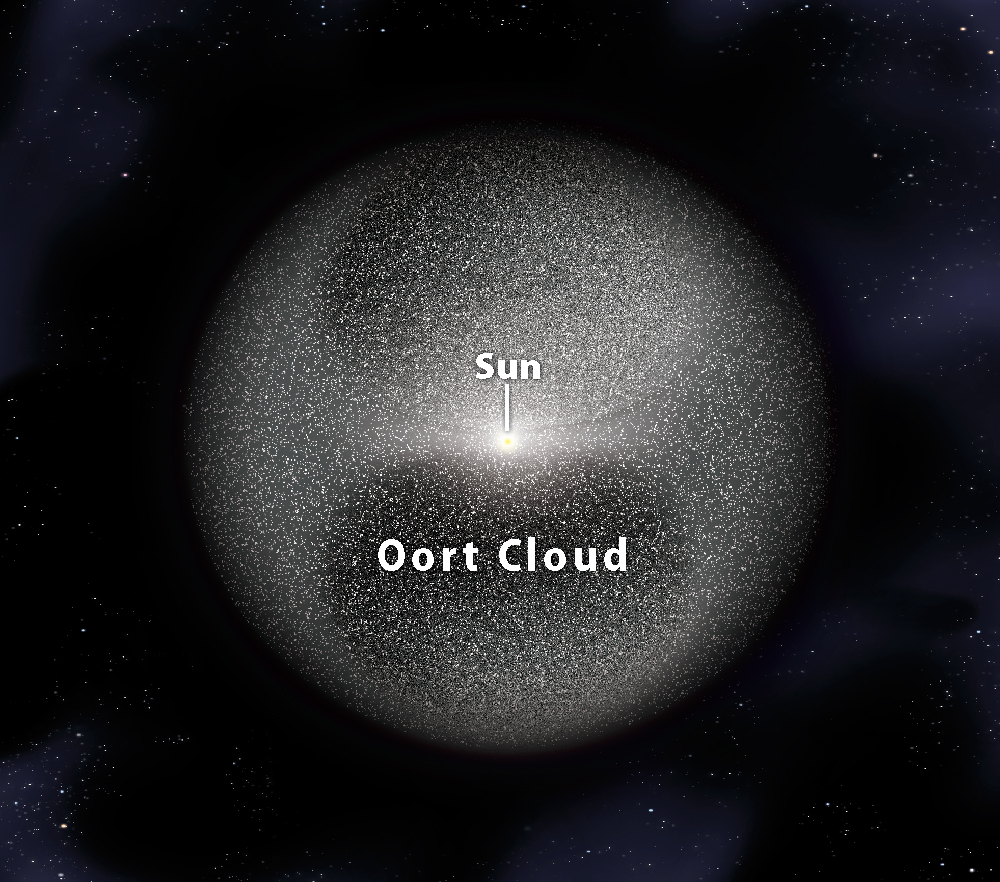Home > Sections > The Universe > The Öort Cloud
Last Updated: 14th June 2023
ARCHIVED ITEM: this page is no longer updated.
The Öort Cloud
Keywords
Öort cloud, Jan Öort, Ernest J Öpik, Brian Marsden, long-period comet, sphere of objects, 1932, 1950.
Introduction
The Öort Cloud, named after a Dutch scientist called Jan Öort, is the most distant area of our Solar System. It is not, in fact, a cloud. Instead, it is a giant sphere of celestial objects, thought to number in the trillions. Some are small, but some are also as large as mountains, and even bigger.
So, How was it Discovered?
It was first theorised in 1950 by a Dutch astronomer Jan Öort, and is a concept of a cloud of predominantly icy planetesimals that surround the Sun in the most extremes of the Solar System. They are between 0.03 and 0.32 light years away. This is the area further than Neptune and the Kuiper Belt.
It is believed to be the remnants of the big bang theory that were not placed together to form the planets at the system's birth, and that this is the source of most of the long-period comets - the comets that orbit the Sun for longer periods of time (around 200+ years).
Interesting fact: although original theories provided the thought that the Öort cloud contained materials from the explosion of our star and the beginning of the Solar System. It is, in fact thought that the cloud could be the product of other stars that have formed in the past, and not close to the Sun.
Historical Context
Pluto was discovered in 1930. It was later demoted to a dwarf planet in 2006, but it was first discovered in 1930. Around this same time, an Estonian astronomer by the name of Ernest J Öpik suggested that there was a possible presence of a distant "reservoir" of comets. Because comets quickly burn out due to being near the inner section of the Solar System, there had to be a fresh supply of comets coming from somewhere.
It wasn't until 1950 that Öort managed to figure out the original pathways of 19 comets that it was deemed an actual thing in existence. Some more calculations later by an astronomer named Brian Marsden, and the theory became true.
So, we now know that the Öort cloud is a celestial area of space before the next star to us, Alpha Centauri, that surrounds us, and gives us long-period comets.
Here is a YouTube video from Explified to explain it more:




 Kuiper Belt
Kuiper Belt Jan Oort
Jan Oort

